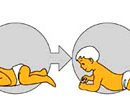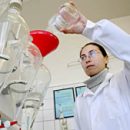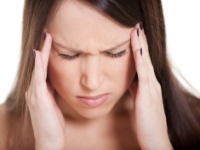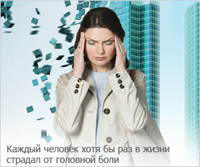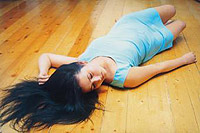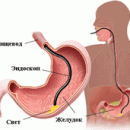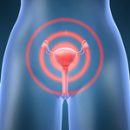A child with cerebral palsy often can't lie, sit or stand in the right symmetric poses. Sometimes such children are generally difficult to be in any position due to the permanent movements that they cannot stop.
Content
Child cerebral palsy (cerebral palsy) is caused by damage to certain brain areas that develop.
This damage can take place in the early stages of pregnancy, when the brain is just beginning to be formed, in the process of childbirth, when the child passes through the birthway or after birth, in the early years of his life.
In many cases, the exact cause of the cerebral paralysis cannot be established.
Until recently, it was believed that problems during childbirth, mainly oxygen deficiency, is one of the main reasons for the development of cerebral paralysis. Now it is known that less than 10% of cases, children's cerebral palsy are caused by factors acting during childbirth (perinatal).
It is believed that at least 70-80% of cases of children's cerebral paralysis begins before the birth of a child (prenatal).
Sometimes the disease begins after birth (postnatally). The likelihood is that many cases of children's cerebral paralysis are the result of the unification of prenatal, perinatal and postnatal factors.
Risk factors for cerebral paralysis
Risk factors for children's cerebral paralysis include:
- Infectious diseases, convulsive states, thyroid pathology, bad habits and other medical problems of the mother.
- Congenital defects, especially head and spinal cord, head, face, lungs and metabolic disorders.
- Incompatibility of the rhesus factor, for the blood group between the mother and the fruit, which can cause brain damage to the fetus. (Fortunately, now this condition is almost always diagnosed in a timely manner and is treated in women who receive a proper prenatal medical assistance).
- Certain hereditary and genetic factors.
- Complications during childbirth.
- Premature birth.
- Low weight at birth (especially when a child's weight is less than a birth at birth).
- Pronounced yardiness after birth.
- Multiple fruits (twins, triple).
- Insufficiency of the supply of oxygen (hypoxia) of the brain during pregnancy, during or after the birth of a child.
- Brain damage at an early age (eg., meningitis) brain injury, hypoxia or brain bleeding.
Manifestations of cerebral paralysis
The manifestations of children's cerebral paralysis are preferably noticeable in early childhood, but become more obvious when the child's nervous system is ripening.
Early signs of children's cerebral paralysis include:
- Delay of achieving such imports of development as head control, turning, achieving objects with hand, seat without support, crawling or walking.
- Holding «Children's» or «unconditional» reflexes that normally disappear in 3-6 months after birth.
- The prevailing use of one hand (right of 18 months or left). This indicates weakness or pathological muscular tone of one hand, and can be one of the early signs of children's cerebral paralysis.
Clinical manifestations and problems associated with children's cerebral palsy can range from very little to very pronounced. The severity of manifestations is associated with the massiveness of brain damage. These manifestations can be very insignificant, notable only for medical professionals, or can be apparent and obvious to parents and other surrounding people.
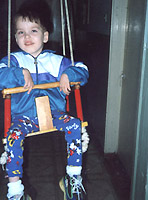 Pathological muscular tone. Muscles can be very tight (spastic) or excessively relaxed (hypotonic). Due to increasing the tone of the limb, can be in an unusual and disadvantageous position. For example, spastic muscles of the legs can lead to crosses of the legs resembling scissors.
Pathological muscular tone. Muscles can be very tight (spastic) or excessively relaxed (hypotonic). Due to increasing the tone of the limb, can be in an unusual and disadvantageous position. For example, spastic muscles of the legs can lead to crosses of the legs resembling scissors.
Pathological movements: Movements can be unusual sharp, sudden or slow and worm-shaped. They can be uncontrollable or aimless.
Skeletal deformations: Patients on children's cerebral palsy often have the shortening of the limb on the affected side. If this is not corrected in a surgical manner or using a specific device, it may cause skews of the pelvis and the formation of scoliosis (spinal curvature).
Joint contractures: In patients with cerebral palsy, often movement in the joints become tight, with limited amplitude of movements. This is caused by uneven pressure (effort) on the joint of different muscle groups by changing their tone and power.
Delay mental development: Some, although not all children with children's cerebral palsy have a delay in mental development. Mostly, the more pronounced mental delay, the higher the overall level of the child's disability.
Causes: The third part of children with cerebral palsy have convulsions. Causes can begin at an early age or a few years after damage to the brain, which served as the cause of cerebral paralysis. Physical manifestations of convulsion can be partially disguised pathological arbitrary movements.
Speech problems: It is partly dependent on the movements of the language, lips and throats. Some children with cerebral paralympics cannot normally manage these muscles and in this way can not normally talk.
Problems with swallowing: Swallowing is a very complex function that requires accurate interaction of many muscle groups. Patients with cerebral palsy, which cannot sufficiently control the work of these muscles have problems with sucking, with food and liquid intake, saliva selection control. They often develop salivation. This may be accompanied by the risk of aspiration - inhalation into light food or liquid through mouth or nose. This may determine the development of infection or even the suffocation.
Hearing loss: Partial hearing loss is not rare with cerebral paralymps. The child may not respond to sounds or have a delay in speech development.
Violations of vision: Three quarters of children with cerebral paralymps have squints (sturdy), that is, deviations outside or deep into one eye. This is caused by the weakness of muscles controlling eye movement. These people often suffer from myopia. If the squint is not corrected in a timely manner, it may cause serious problems with vision over time.
Teeth problems: People with cerebral paralymps more often have caries. This is caused by congenital disadvantages of dental enamel, as well as difficulty with cleaning teeth.
Problems with measurement control and urination. They are due to the insufficiency of control over the work of the respective muscle groups.
When to beat the alarm
If your child was born prematurely, with low body weight, or suffered certain complications during pregnancy or childbirth, it is necessary to closely monitor parents and doctors to identify signs of formation of cerebral paralysis. Below, the specified symptoms serve as a sufficient reason to contact your doctor.
- Your child has cramps
- The movement of the child looks unusually clumsy, not coordinated, or slow and worber-like
- Your baby's muscles look excessively tense, or, on the contrary, relaxed and soft
- Your child does not blink through the eyes in response to a loud sound aged one month
- Your child does not turn his head in the direction of sound at the age of 4 months
- Your child does not reach a hand for a toy at the age of 4 months
- Your child does not sit without support at the age of 7 months
- Your child does not say words aged 12 months
- Your child has an explicit right left left up to 12 years
- Your child has a squint (sturdy - one eye directed deep into, or out)
- Your child does not go, or walks with a tight or abnormal hiking, such as a walk on the fingers.
These are just some of the most obvious symptoms that may indicate the development of children's cerebral paralysis. You need to consult a doctor about all the problems that may be caused by insufficient control over the work of the muscles and movements.
Detailed examination
If your child has symptoms that may indicate cerebral palsy, it needs to conduct a detailed examination. No medical studies that could confirm the diagnosis of cerebral paralysis. The diagnosis is made on the basis of versatile information received by your doctor or other consultants.
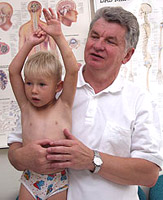 This information includes a detailed sefing of the parents paying attention to all important moments of the history of the life of the father and mother and their family. Special attention is paid to the course of pregnancy and childbirth and the state of the mother's health at the present time.
This information includes a detailed sefing of the parents paying attention to all important moments of the history of the life of the father and mother and their family. Special attention is paid to the course of pregnancy and childbirth and the state of the mother's health at the present time.
You will need to tell you about all the medical problems of your child and describe its motor and mental development.
Other questions will also be asked. It is very important to fully and frankly answer all questions, since your answers can help establish the correct diagnosis.
Laboratory research: Different studies of blood and urine can be intended if the doctor suspension that the child's violations can be caused by various chemical, hormonal or metabolic factors. To eliminate genetic syndromes, the analysis of chromosomes including karyotydinous analysis and specialistic DNA studies.
Visual research give information about the structures that are inside the human body. When studying the head and spinal cord, these studies are often called neuroviasualization. These tests are not always necessary, but in many cases they can help determine the cause of children's cerebral paralysis and the spread of brain lesion. They must be carried out as early as possible so that when needed immediately begin the appropriate treatment.
Ultrasonic Brain Study. Used harmless sound waves to determine structural and anatomical brain disorders.
For example: ultrasound examination can show hemoracia (hemorrhage) into the brain or damage caused by the lack of oxygen supply to the brain. Ultrasound examination is often used in newborns who cannot transfer more stringent studies, such as computed tomography or magnetic - resonant tomography.

